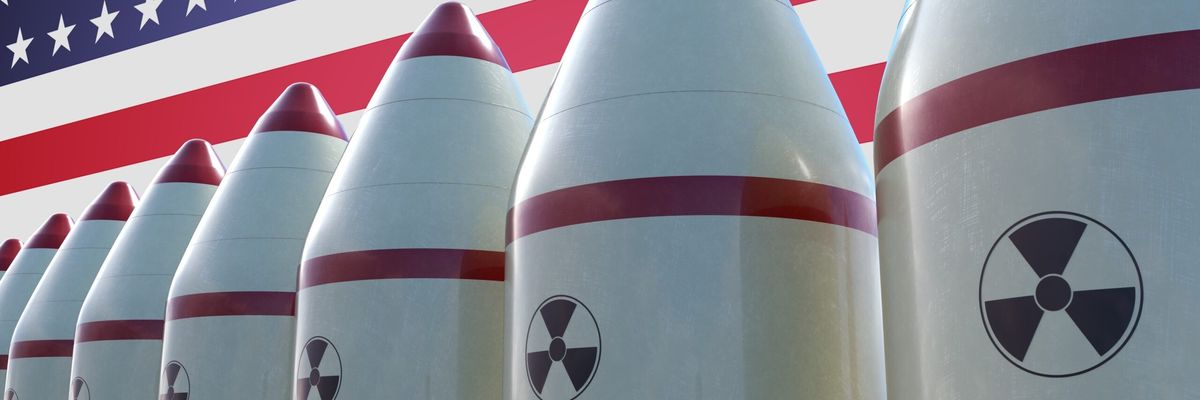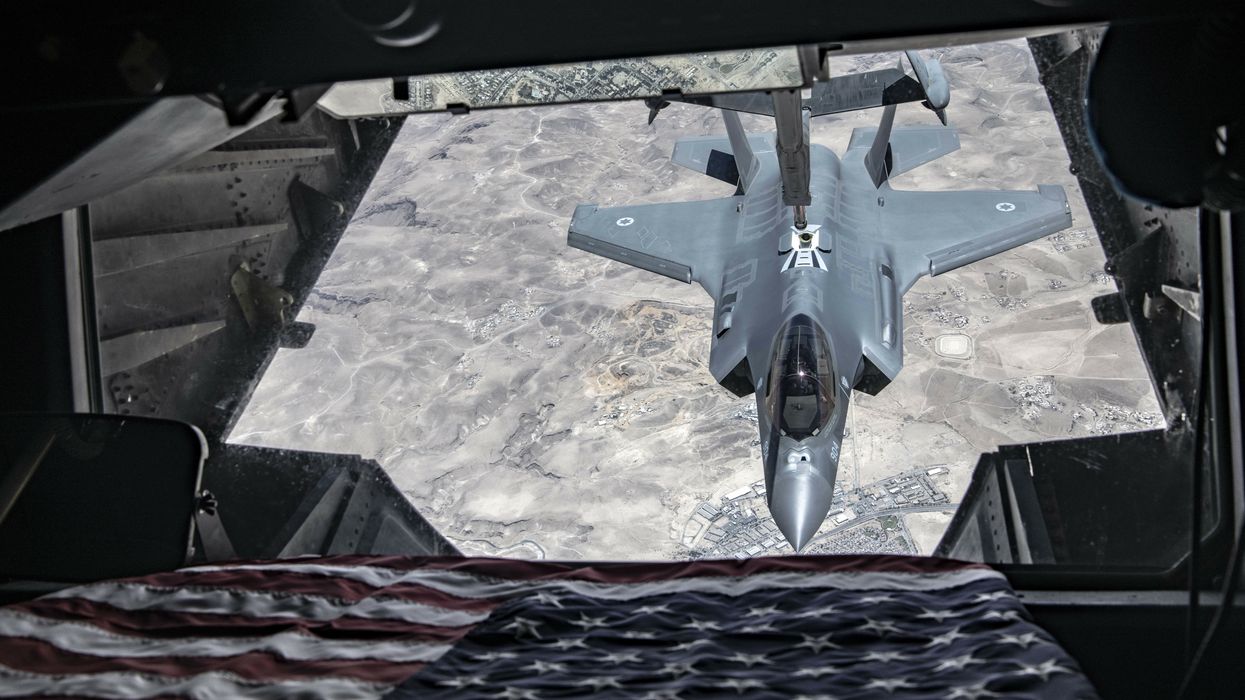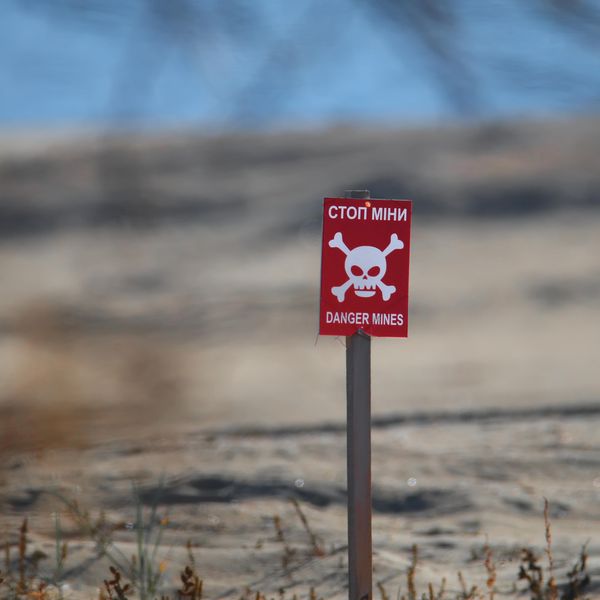If you read a report about nuclear weapons, odds are it was published by a think tank funded by a company producing nuclear weapons. In our recent study of global nuclear weapons spending, we found that almost all major think tanks working on nuclear weapon issues took money from companies involved in the nuclear weapons industry in 2020 — raising questions about their intellectual independence and moral integrity.
In the report, we include 12 think tanks, picked from the Global Think Tank Index’s top foreign policy think tanks that also publish regularly on nuclear weapons from France, India, the United Kingdom, and the United States. We found the 21 companies that received nuclear weapon contracts gave $10 million in grants to these think tanks in just one year, as reported in the think tanks’ own annual reports and on their websites. This is a systemic issue. It’s not just one think tank, or a few $100,000 grants. Half of the profiled think tanks received up to well over one million dollars in one year from at least nine different companies working on nuclear weapons.
These companies don’t just donate money; key executives also oversee and advise several of these think tanks. Three CEOs of nuclear weapons-producing companies — Guillaume Faury (Airbus), Gregory J. Hayes (Raytheon), and Marillyn A. Hewson (until recently Lockheed Martin) — sit on the advisory board of the Atlantic Council. The Center for New American Security has a similar story: up to $1.8 million received from companies working on nuclear weapons and five board seats for those whose livelihoods are tied to nuclear weapon production.
These links are a problem for two reasons: it raises questions about the think tanks’ independence, and it ties them to companies engaging in immoral activities banned under international law.
Given the sway that these think tanks seek to have over nuclear policy, the extent to which they may be shaped by the funders with a vested interest in nuclear weapons is an important question. When making policy around issues that risk indiscriminate harm, there needs to be more space between those who profit from inaction and those who profess intellectual independence.
At this stage, we do not know how the millions received by these major think tanks influenced their work, in part due to lack of transparency and unconscious bias. Not all think tanks disclose their funders. For those that do, most do not disclose program-specific funding, and seldom provide details on project- or report-specific funding. Our research does not prove that think tanks writing on the need to maintain nuclear deterrence, or build new nuclear weapon systems, do so because the companies that will benefit from nuclear weapons contracts may have paid for lunch at their seminars, or salaries for their staff.
But the general effects of funding on the production of knowledge have been well established in other fields. In a 2020 book, Naomi Oreskes found that the source of funding had a significant impact on the outcome of oceanography studies. Simone Turchetti wrote earlier this year about NATO’s efforts to cover up politically damaging studies on nuclear winter. And a 2018 study in the American Journal on Public Health on industry funding of public health research found limitations on the beneficiaries’ research agendas and the proposed policy solutions. The Center for International Policy’s Foreign Influence Transparency Initiative regularly reports on the “foreign influence industry working to shape U.S. foreign policy,” including a 2020 report on defense contractor funding to the top 50 U.S. think tanks over a five-year time period.
And yet, think tank researchers often deny any influence from their nuclear weapons-producing funders. Those contacted prior to our report’s publication pointed to reports about nuclear arms control and intellectual independence policies as proof of their objectivity. However, think tank staff may not even be fully aware of the extent to which funders’ interests influence what is said and where. This means that think tanks’ explicit intellectual independence statements, while a step in the right direction, do not negate the risk of bias. Similarly, funding that is directed towards one program in a think tank may still influence other areas. Just as it is difficult to definitively prove the influence of this funding, particularly without further research, so is it impossible to deny outright that $10 million to a dozen think tanks makes no difference to the nuclear policy field.
In addition to the concerns of influence, think tanks should consider the optics of taking funds from companies producing weapons of mass destruction, which have recently been banned under international law through the Treaty on the Prohibition of Nuclear Weapons. The adoption of this treaty has pushed banks and financial institutions to cut ties with nuclear weapons producers. Think tanks should follow suit.
Other fields and initiatives have grappled with controversial corporate funding either in recognition of the risk of influence or because it looks bad. The Environmental Defense Fund has come under fire for accepting funds from the fossil fuel industry. The role of the tobacco industry was so detrimental that in the World Health Organization Framework Convention on Tobacco Control, parties are obligated to protect public health “policies from commercial and other vested interests of the tobacco industry.”
This is a significant issue but it is certainly not a lost cause. Think tanks must acknowledge that there is a problem and take decisive action. They can individually or jointly pledge to not accept funding from companies working on nuclear weapons. There are already some research organizations in the field, including the Arms Control Association and the Federation of American Scientists, which did not accept any funding from nuclear weapons producers in the past year.
We’ve pointed out the nuclear weapon think tank funding problem, and now it is up to these think tanks to fix it. As long as their bank accounts and board rooms are filled with the profits and profiteers of vested interests, the independence and integrity of their research and policy solutions will be called into question.
















